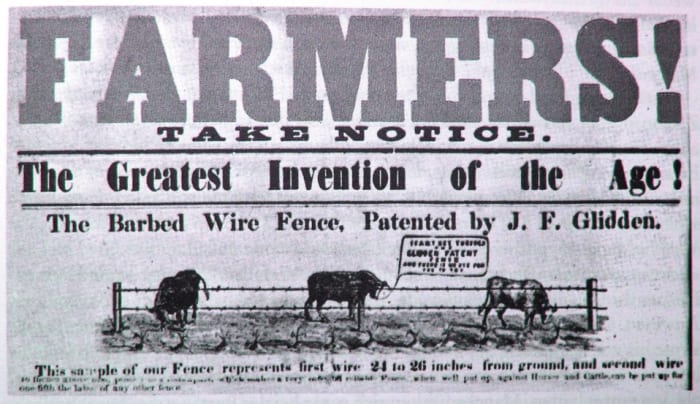Some of Bitcoin’s properties seem abstract. Properties like digital ownership, censorship resistance, decentralization and more. But the deeper you dig into the Bitcoin rabbit hole, the more you realize that Satoshi Nakamoto has even implemented certain mutually exclusive properties simultaneously: freedom of privacy and property rights. In fact, Bitcoin balances an uncensorable pseudonym system with an extreme form of property rights. I would like to show why this combination was in fact nearly impossible using an analogy based on the barbed wire example in Timothy C. May’s “Crypto Anarchist Manifesto”.
We first find the “barbed wire” analogy in one of the shortest but most exciting texts of the cypherpunk movement, the aforementioned “Crypto Anarchist Manifesto”. While the common man had never heard of the Internet at the time, the minds of cypherpunks, which were only forming in the early 1990s, had already painted a clear picture of the era of information, its promises and its dangers. Those who find “The Sovereign Individual” thesis prophetic should certainly bear in mind what crypto anarchists were already discussing a decade earlier.
With works like David Chaum’s “Security Without Identification: Transaction Systems To Make Big Brother Obsolete” in 1985, this once-nascent movement counterpointed technology’s trends toward centralization and control, even though that real danger was still long overdue. Really far. May was a libertarian-minded former Intel employee who retired from the company at 35. He became a co-founder of the cypherpunks mailing list and wrote influential texts. Among them was the “Crypto-Anarchist Manifesto”, which he distributed at a conference on hackers in 1988.
In it, May points to the grand future of cryptography, which would eventually realize the grand vision of anonymity and privacy in cyberspace. In what is an almost chilling visionary essay from today’s perspective, May shows what possibilities encrypted communication between people could offer. He not only compared encrypted communication to the invention of the printing press, but chose an analogy that had it all: the invention of barbed wire.
May wrote: “Just as a seemingly minor invention like barbed wire made possible the fencing off of vast ranches and homesteads, thereby forever altering concepts of land and property rights on the western frontier, so the seemingly minor discovery from an obscure branch of mathematics have become the wire cutters that dismantle the barbed wire around intellectual property.”
Interestingly, it is clear from the comparison that the impending (state) surveillance and restriction of the individual goes hand in hand with the invention of barbed wire. It is cryptography, however, that cuts the barbed wire around intellectual property. From today’s perspective, the mental picture May chose to paint can hardly be surpassed in genius and ambivalence. After all, thanks to Bitcoin, the picture even works both ways.
Barbed wire is an often underestimated invention, and few knew what implications it would have. In the United States, the so-called “frontier”, or the boundary between settled or “civilized” areas and undeveloped areas, had shifted further and further west. It was seen as a divine mandate, a “Manifest Destiny”, to settle the whole country. To this end, President Abraham Lincoln had launched the Homestead Act in 1962. It stipulated that any “honest citizen” could acquire land free of charge. To claim his property, it was enough to make it his own through agricultural exploitation.
But plowing the fields in the vast prairie was difficult, as the land was practically a single open space. It was inhospitable, overgrown with weeds, sometimes difficult to access and used by cowboys, ranchers or Native Americans, sometimes in an almost nomadic way. Fencing the land was either costly or inefficient as neither wooden fences nor planted hedges could keep unwanted visitors out.
A single, seemingly small invention changed everything from the nature of farming to the treatment of public lands to the notion of property: the invention of barbed wire. The new type of fence was announced in 1875 as the “greatest discovery of the age”. Patented by Joseph Glidden of Illinois, it was “lighter than air, stronger than whiskey, cheaper than dust”. And indeed, it has brought about a transformation of the American West. Double twisted wire with spikes was used everywhere: by railroad companies marking out their lines, by ranchers marking out fields or raising cattle, and by anyone who used it to mark and protect their property.
Barbed wire was a double-edged sword. The settlers loved it because it made property a fact. Cowboys, who used the open land extensively, hated dangerous cables that caused injury and infection. Native Americans were increasingly driven from their lands because their concept of ownership was not to draw firm boundaries. No wonder they quickly referred to the barbed wire as “the devil’s rope”. Old-time cowboys also lived by the principle that the great prairie was common property and cattle could run free under the law of the “open range.”
Barbed wire was a disruptive invention and a fight soon broke out over it. In the “fence-cutting years”, masked gangs like the Javelinas or the Blue Devils cut the fences and threatened the settlers who erected them until lawmakers intervened. The barbed wire had to stay.
Interestingly, cypherpunk Timothy C. May uses the barbed wire analogy to contradict the invention of cryptography. It was an equally underrated and seemingly small invention, but one that successfully played the “wire cutter”. The ideal of the free “open range” was restored and unlike the gangs that ended up being taken down, the math was simply unstoppable.
The mental picture is great because it reverses logic. Barbed wire drew boundaries in freedom. But a small pair of wire cutters can undo them. And, like a battle cry, the “Crypto Anarchist Manifesto” ends: “Get up, you have nothing to lose but your barbed wire!
Today, with Bitcoin, one of the cypherpunks’ visions has come true. In fact, we are exactly on the path that the “Crypto Anarchist Manifesto” prophesied, both in cryptographic and economic terms. The text stated that cryptographic methods would “fundamentally change the nature of business and government interference in economic transactions.” We are well on our way to this reality, thanks to Bitcoin.
But while the image of barbed wire dividing vacant land into parcels may seem unattractive to us, Satoshi Nakamoto’s mathematical-economic invention bears some similarities to the disruptive invention of barbed wire in the 19th century. At first glance, Bitcoin is also a small mathematical discovery that seems unassuming, but Bitcoin fundamentally changes some things.
The ambivalence is that, on the one hand, it is indeed the vision of an “open range” that crosses resistance, borders and (governmental) surveillance like wire cutters. On the flip side though, Bitcoin precisely allows effortless delineation of ownership. Bitcoin is like a “barbed wire” for property rights in the digital world. Indeed, it is the ingenuity of this invention, cryptographic encryption in conjunction with the time warp, that turns what was initially only a theoretical property right into a reality.
Indeed, Bitcoin transactions, although pseudonymous, exhibit many formal aspects of property rights as we know them in real estate. For example, the property is publicly registered and displayed without gaps in interconnected blocks. This property is publicly accessible and verifiable for each individual. And it is ensured that no duplicate claims exist. The time chain becomes a kind of public cadastre. Transferring these features and processes to a pseudonymous system is indeed unique – barbed wire and wire cutter at the same time.
While tech critics bother with superficial analogies like tulip mania, Bitcoiners know that fundamental philosophical debates underlie all Bitcoin issues. Philosophers like John Locke or Jean-Jacques Rousseau would write whole books on the fundamental questions of this digital commodity, if they were still alive.
After all, what do we really own besides our body? The one we cultivate with our work? What are we transforming? Or simply what can be delimited?
This is a guest post by Holger von Krosigk. The opinions expressed are entirely their own and do not necessarily reflect those of BTC Inc. or bitcoin magazine.

